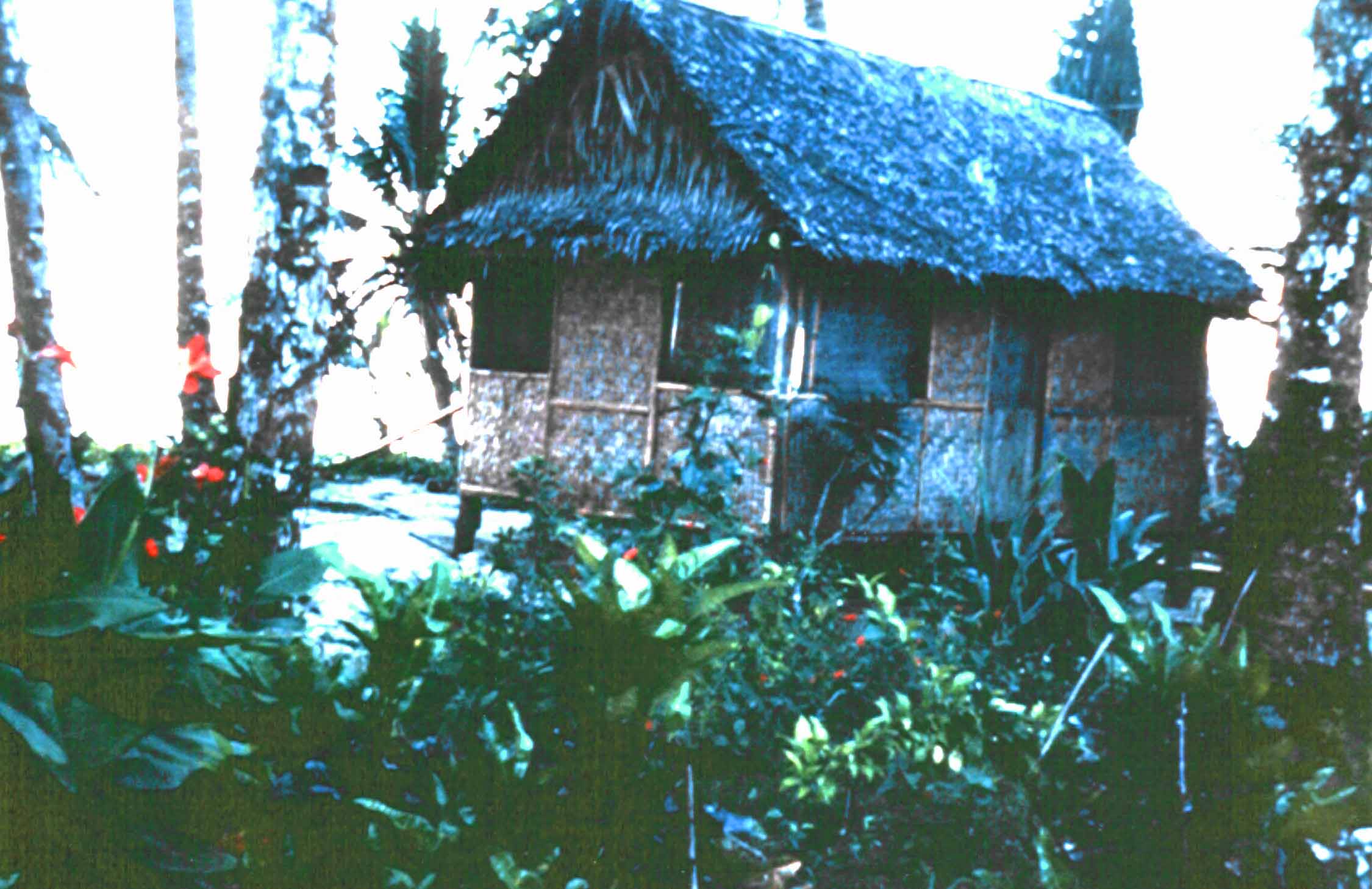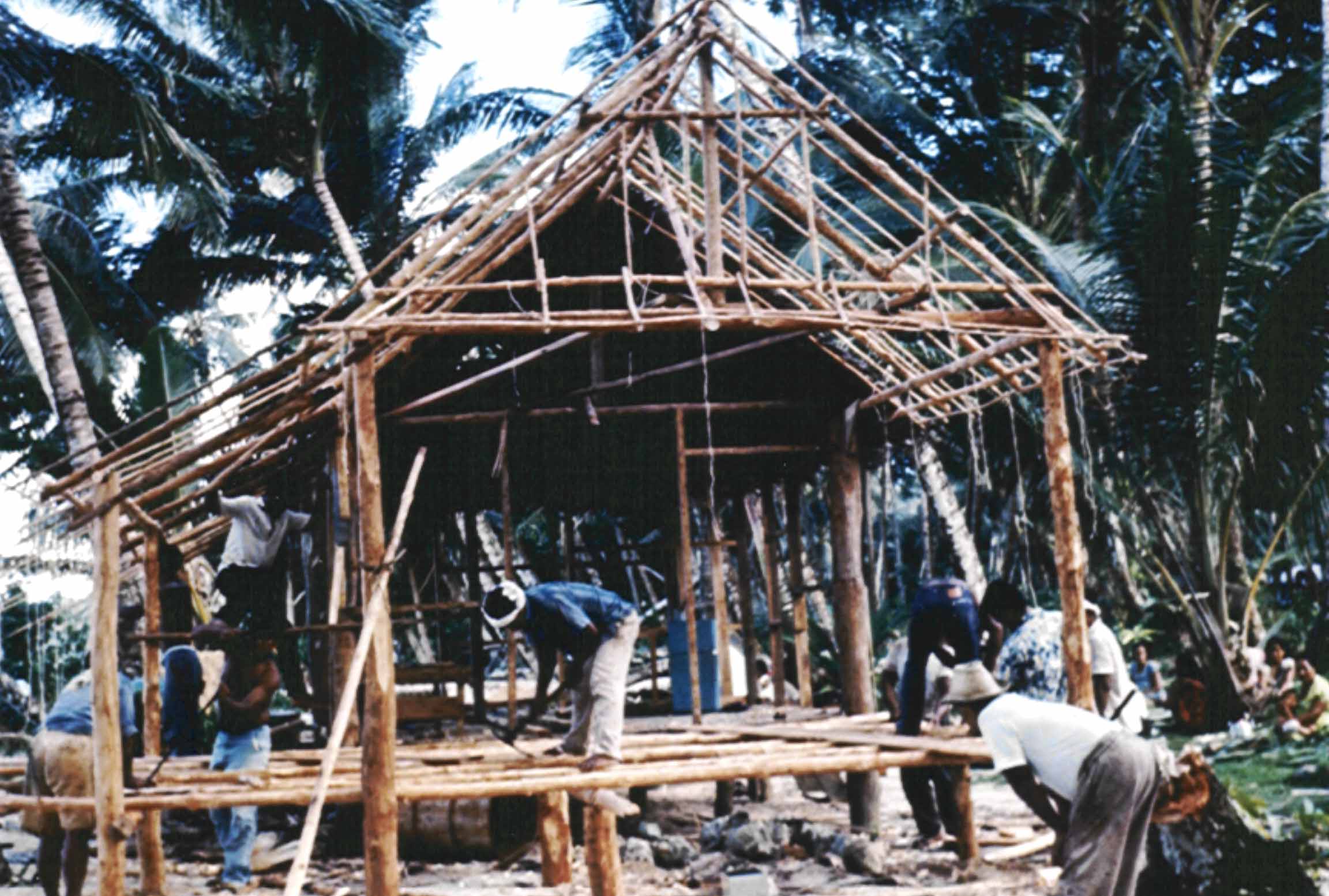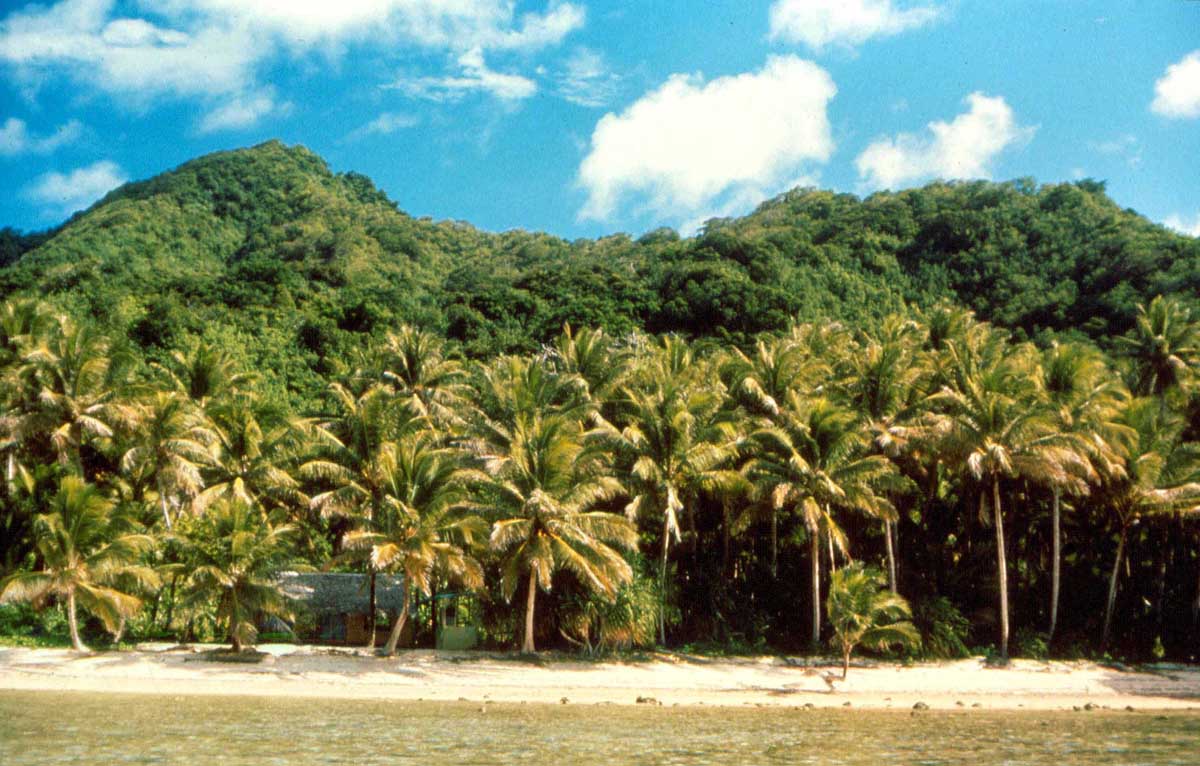LYNN'S ACCOUNT OF LIVING ON KOSRAE IN MICRONESIA, 1969-1975, p.3
 Kosrae,
with the silhouette of the “Sleeping Lady.”
Kosrae,
with the silhouette of the “Sleeping Lady.”
Kosrae was serviced by field trip boat every month or so. That meant no food deliveries for that long and no mail. It was very exciting when the boat came: new stock in the stores and mail from home (several weeks worth of Newsweeks, letters and packages from relatives, etc.). During the period that the ship was in port (from a few hours to overnight), we would try to quickly answer some of the letters we had received.


The Dock in Lelu on Boat Day Pohnpei Bound Passengers Boarding
When we first arrived on Kosrae, we went to live with a family for a few months while our final living arrangements were being made. This family lived in Tafunsak, the municipality where we spent the two years. Unlike Pohnpei, where most households were dispersed, Kosraie's population was mostly concentrated in four villages: Lelu (the capital), Tafunsak, Malem, and Utwe (where we spent our second stay). Lelu was also where the monthly (or so) ships docked. Kosrae’s mountainous interior rose to 2,000 feet and was uninhabited. The sandy fringe around the edge was where all the villages were located.
 Our hosts Nena & Shrue
Our hosts Nena & Shrue
Papa Nena, our Kosraean father and father of the family with whom we stayed at first, lived on the outskirts of Tafunsak in a large and beautiful house with a more traditional thatched cookhouse in the back. He and his wife Srue welcomed us into their lives and home, which they shared with their children and grandchildren. One of the grandchildren was in fact named after me. They introduced us to the Kosraean way of life and remained our “family” for the whole time we were there.
After a month or two, we found a place of our own, also on the fringes of Tafunsak and not too far from Papa Nena’s. This house belonged to Papa Kioken, who became our landlord for the two years. He had built a small house on the beach that had been rented by a former Peace Corps Volunteer. Although it was now in disrepair, we decided to take that house and enlarge it. It was a beautiful site—never again will we have beachfront property!

We hired a work party to basically rebuild and enlarge the house. It really was a grass shack built on stilts on the beach—a style that kept the floors dry during high tide. The floor was made of wood planks, which we covered with big woven pandanus mats (housekeeping was easy—we just swept the sand out the door). The sides were made with split and woven reed panels. The roof was thatch. And yes, that house kept us warm, snug, and dry for two years. Temperatures never varied from about 78 to 82 degrees anyway, and it was always very humid.
 The Old House
The Old House
 Constructing Our House
Constructing Our House
 The Finished House
The Finished House
The house was about 30 feet long and divided into two areas: a bedroom and a living area. We also had an enclosed (with screen) porch looking out onto the sea. We actually didn’t use it as much as I had originally envisioned. At the one end of the living area, we built a large picture window facing the water that was by mistake placed very low to the ground. We decided to capitalize on that and make a low Japanese-style table for in front of the window. Every night, we sat and ate dinner gazing out over the sea.
 View from
Dining Area
View from
Dining Area
You notice there is no mention of a bathroom—because we did not have one inside the house. The outhouse was about 20 feet from the house nearer the ocean—we had a waterseal toilet which we flushed with a bucket of water. The shower, which was right next to the house, was a separate structure built of plastic panels on the sides and roof. Rain barrels were hoisted on high to catch the rain flowing from the roof panels. It was quite an elaborate structure with lots of pipe and even a showerhead. The water was not heated, but then it didn’t need to be because of the warm weather. But we always bathed in the afternoon before it got dark—and on stormy, rainy days, it did seem cold.
Our House from the Reef (Click on picture to enlarge)
